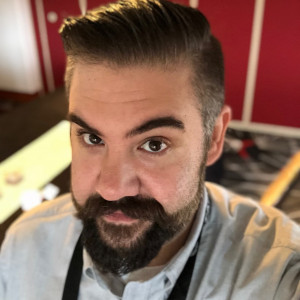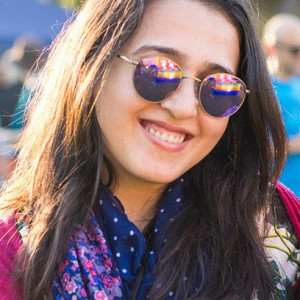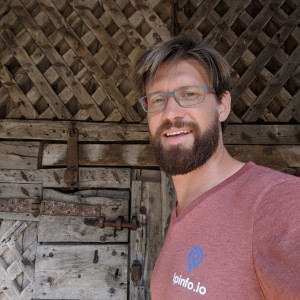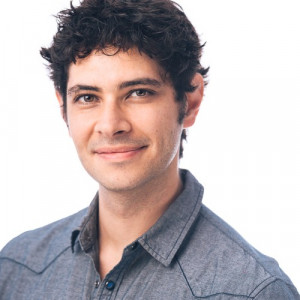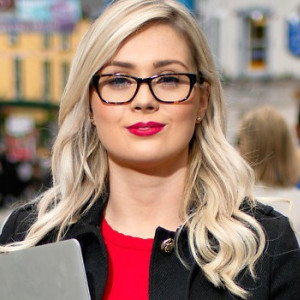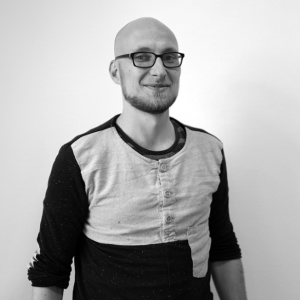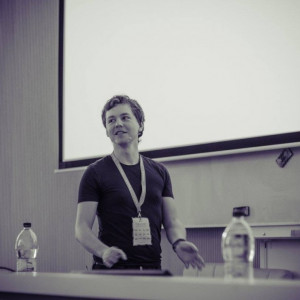What's your typical work routine?
Interview with Nelvina, a fashion designer who designs bags and clothing
I start the day by checking my emails and Upwork messages. I will respond to most of the messages from my phone for general queries clients or potential clients might have. After completing my morning routine, I will respond to messages from clients regarding on-going projects and then respond to any interview request on Upwork.
I then check my to-do list to see what I have planned for the day. I usually start by the project with the most critical deadline. Sometimes I complete most of my tasks in the morning and I am left with a few hours before getting messages from client because of the timezone. Mauritius is about 8-12 hours ahead of the US and 2-3 hours ahead of Europe.
I use these few hours for my hobbies; cooking, reading, sewing.
I try to complete all my projects as soon as possible and if I receive feedback for changes, I make sure to amend my design within the next few hours.
Nelvina is a freelance fashion and graphic designer that works remotely while working with clients all around the world
Read full interview from Interview with Nelvina, a fashion designer who designs bags and clothing.
Interview with Eddie, an Engineering Director
About half our company works remotely, and our entire engineering group - about 40 people in total - is distributed. This means that juggling timezones & working asynchronously are just facts of life.
But before all else, coffee!
First, I go through unread Slack messages and emails, answering questions and unblocking folks where needed. Then I take a life break to get the kids up and off to school.
The rest of my workday is spent in meetings.
I used to be very anti-meeting, but now I think that when run well, they can be very effective at keeping projects moving. Meetings also provide much-needed social interaction that is generally lacking in remote teams.
My meetings range from 1:1s with direct reports, to playing scrum master for one of our dev teams, to policy review and writing, to discussing strategy, roadmap and culture with other leaders across engineering, product, and data science teams.
Most of our meetings happen via Zoom or Slack video. I like to feel prepared, so I take 10-15 minutes before each meeting to compose my thoughts, and then 10-15 minutes after the meeting to summarize outcomes and next actions.
As a team, we make sure to set aside at least one hour each week to meet and discuss salient topics. This satisfies our social drive and acts as a scrum-of-scrums.
The format is fluid, but the beginning is mostly banter. Then I update the team with any new information or noteworthy events, after which we invite team members to share things they've worked on or found interesting or challenging. This can be work-related or more broadly technical.
Since we don't all share an office, and can't glance at a colleagues screen, we have to be intentional about making time to recreate those opportunities remotely.
I try to keep Fridays open. This gives me the time and freedom to roll up my sleeves, work on development projects, research, and/or mentor newer team members.
Eddie is an Engineering Director - learn how he manages to absorb interruptions and manage information overload while staying productive.
Read full interview from Interview with Eddie, an Engineering Director.
Interview with Michael, a VFX artist that works remotely
On a typical day with work I wake up around 9 a.m. and open the documents for the project I am currently working on. I usually save the work I had and leave the project files up in the folders so I know exactly where I left off with a few foot notes.
I take 3 smoke breaks and 1 lunch break throughout the day. If it is just one big project I tend to only make sure I am awake during milestone interviews that usually have the team I am working with Skype message and discuss everything that is finished and needs to be finished.
On days such as those, it’s hard to say when I would be awake and when I would be sleep because I stay awake for up to 20 hrs sometimes. Especially if it is something that hasn’t been done before and I have to figure it out myself.
Michael is a freelance visual effects (VFX) artist, creating 3d models, mockups and videos while working remotely.
Read full interview from Interview with Michael, a VFX artist that works remotely.
Interview with Ayesha, a freelance writer that gained early clients through her blog
I start work after sending my son to school, having my breakfast and making the home look a little bit presentable (because with kids it’s never entirely clean).
The day before I usually have my tasks listed down for the day. That way I can just get to the work, without wasting any time. I work for two hours straight. Then I get a little break. I do the rest of my duties as a mother and a homemaker. If I feel that I have accomplished a good portion of my tasks, I give myself a treat by watching Netflix or going out to catch up with a friend.
The next part of my work starts in the afternoon, with the kids playing, watching TV or simply unwinding in their strange way. That’s when I believe I can do justice to my work and to my kids. I finish off my work tasks. These usually are proofreading or going back to check the work I have done previously.
When done, I shut off my laptop for the day. I don’t think about work again until I go to sleep.
That’s when I list down the next day’s task on a piece of paper (I’m kind of old school in that way).
Ayesha is a freelance content writer—learn how she made the leap to remote work while building her blog and raising her family
Read full interview from Interview with Ayesha, a freelance writer that gained early clients through her blog.
Interview with Ben, a CEO/Engineer who works remotely
I used to like working a lot at night, but with 3 kids and a wife, I've become more of a morning person! I usually have breakfast with my family, and then either head to the gym with my wife, or get started on work.
I usually spend the mornings catching up on emails and messages, or doing phone calls. I'll grab some lunch, and then try and get most of my creative work done in the afternoon - either coding, planning or getting something else done.
I'll usually have dinner with the family, put the kids to bed, and then get a few more hours of work done in the evening, which can be my most productive time.
Ben is a CEO/Engineer who works remotely - find out how he balances working at home and family life!
Read full interview from Interview with Ben, a CEO/Engineer who works remotely.
Interview with Kevin, a developer and remote consultant
I prefer not to work from home, as I get distracted easily. I also enjoy being able to turn off and separate home from work.
I'm part of a coworking space in Boston called Workbar. They have a number of locations around the city. One location is accessible via a secluded bike trail, so if the weather's nice I'll bike to work. Otherwise, I'll take the train to a downtown location.
I try to get my day started early. As much as I can, I devote Mondays to phone calls, errands, and other small tasks that tend to pile up during the week. For the rest of the week, I try to focus on deeper tasks like programming or writing.
On Fridays, I'll tend to work out of coffee shops around the city, just because I can.
I try to start my day with my most important personal task, which is writing. Otherwise, I find that consulting work or other tasks tend to box it out.
As much as possible, I try to combine similar tasks together. I use NotePlan (a markdown to-do editor) to track my tasks.
Kevin is a developer and consultant working on many different projects - learn which tools he uses to optimize his time management.
Read full interview from Interview with Kevin, a developer and remote consultant.
Interview with Elizabeth, a graphic designer and art director
During the week, I start at 7:45 am to catch the end of the day in Singapore and Hong Kong, where some of my clients are based. I spend the first hour of my day working on written projects—mainly articles and newsletters for clients.
My day starts to get noisy around 9 am, and I spend the rest of my morning either on calls or working through client edits. I try to save the afternoons for deeper, more creative work, so I do most of my pixel-pushing from 4 pm until around 7 pm.
I work long hours as my client base spans from Hong Kong to New York, so time zones are always on my mind!
I have workaholic tendencies that I’m not always proud of, but I usually take Saturdays off and work to some extent on Sundays.
My Sunday ‘surgery’ sessions allow me to course-correct my work delivery schedule and catch up where I need to so that I am well-prepared the start of a new week.
Elizabeth provides the ultimate list of tips for aspiring freelancers and remote workers. Check out her game-changing tools, and advice for thriving as a freelancer.
Read full interview from Interview with Elizabeth, a graphic designer and art director.
Interview with Shauna, founder and business consultant specializing in remote work
I believe self-awareness is critical when working remote. I'm a morning person, and my brain functions at it's best in the morning. I usually start the day off with a gym class, grab a coffee on the way home and get ready, before sitting down to work by 7.30am.
I focus on the most strategic tasks first thing and leave mundane tasks until the afternoon. I make sure to always take a lunch break in between (away from the screen) and get some fresh air throughout the day.
Shauna is a consultant that guides companies in thriving while remote—see her advice for staying grounded as a remote worker.
Read full interview from Interview with Shauna, founder and business consultant specializing in remote work.
Interview with Max, a Deep Learning Engineer with a winning strategy for distractions
My routine is purposefully on the dull side.
I believe that focus is just the absence of distraction, not a muscle you need to train.
I have two principles that I follow and that have served me quite well. The first principle is to get two chunks of deep work every day, one in the morning, one in the afternoon. If I manage to do so, how I spend the rest of the day doesn't matter.
This way I don't have to stress out about an endless list of habits that usually end up being another stress factor for me. Of course, achieving this is not an easy feat, especially in a remote setting.
Tools can help, but for me, it's important not to cling to any particular routine, but instead be flexible to stay consistent with the principle.
The second principle I follow is to do one important thing and do it well, a personal twist on the Linux philosophy. You could understand this as not doing multitasking, which I do fully agree with, but what I mean by it is another aspect.
If you look at your daily workload there are usually things that you tend to avoid or keep postponing. Those are often the most important tasks.
Being busy and doing a lot of things instead is the easy way out. So what I do each morning is write down a top 3 list of things that really need to get done.
The number one pick is usually by far the most important. If I manage to complete this crucial task, it will be a productive day. I sometimes get push back when talking about this idea, but as a thought experiment imagine that every employee in your company did 200 things a year that bring the business forward.
After a chance Twitter conversation, Max found a remote position as a Deep Learning Engineer —see how he manages distractions and maintains focus throughout his day.
Read full interview from Interview with Max, a Deep Learning Engineer with a winning strategy for distractions.
Interview with Igor Kulman, a software engineer building iOS apps remotely
I have a quite strict work routine that I developed and really helps me stay focused. I get up at 8 am every day, check Twitter, have some tea and start working at around 9 am.
On Mondays, I basically start my day with a weekly sync call at 10 am where we talk about what was done the week before, what are the plans for the coming week.
I usually take a long lunch around 1 pm, I almost always go out for lunch, for a change of scenery, so I do not spend the whole day at home.
The advantage of working from home and having a flexible schedule is that I can go for lunch basically anywhere I want, I am not constrained to a specific area around the office.
I stop working around 5 pm or 6 pm, depending on the workload. I turn off the computer, leave the room and switch context.
I usually go for a walk to clear my head and catch up on podcasts. Once or twice a week I go for a swim after work hours.
Igor converted a part-time contract into a full-time remote software engineering job—learn how he did it and his tips for working remotely.
Read full interview from Interview with Igor Kulman, a software engineer building iOS apps remotely.

